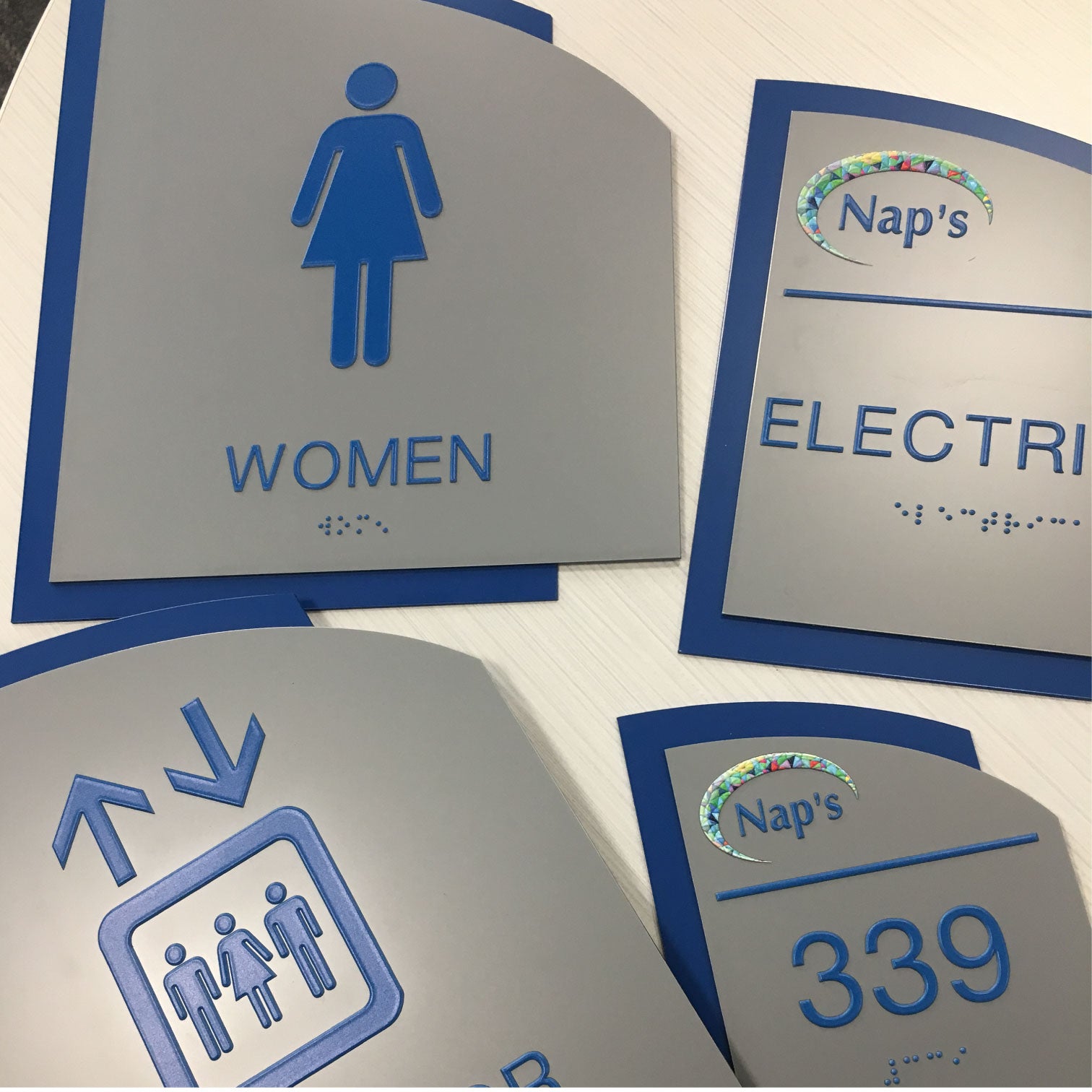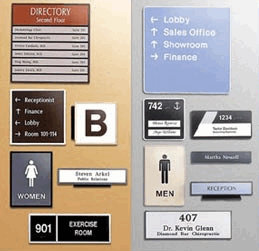A Comprehensive Overview to Choosing the Right ADA Signs
A Comprehensive Overview to Choosing the Right ADA Signs
Blog Article
Exploring the Key Features of ADA Signs for Boosted Availability
In the world of ease of access, ADA signs serve as quiet yet powerful allies, making certain that areas are comprehensive and accessible for people with specials needs. By incorporating Braille and responsive components, these signs damage barriers for the visually damaged, while high-contrast shade schemes and understandable font styles provide to diverse visual requirements.
Significance of ADA Conformity
Making sure compliance with the Americans with Disabilities Act (ADA) is important for cultivating inclusivity and equal access in public rooms and work environments. The ADA, established in 1990, mandates that all public centers, companies, and transport solutions fit people with impairments, ensuring they appreciate the same legal rights and possibilities as others. Compliance with ADA requirements not just meets legal obligations yet additionally enhances an organization's reputation by showing its commitment to variety and inclusivity.
One of the vital aspects of ADA compliance is the execution of easily accessible signage. ADA indications are developed to make sure that people with disabilities can easily browse via buildings and rooms.
Moreover, adhering to ADA regulations can minimize the danger of possible penalties and lawful effects. Organizations that fail to adhere to ADA guidelines may encounter suits or penalties, which can be both economically troublesome and destructive to their public image. Therefore, ADA compliance is important to promoting an equitable setting for every person.
Braille and Tactile Aspects
The consolidation of Braille and responsive elements into ADA signs embodies the concepts of availability and inclusivity. It is typically placed below the matching text on signage to make sure that people can access the details without aesthetic aid.
Responsive components expand past Braille and consist of elevated personalities and signs. These parts are made to be noticeable by touch, enabling individuals to identify space numbers, restrooms, leaves, and various other essential locations. The ADA sets certain standards relating to the size, spacing, and placement of these responsive components to maximize readability and ensure consistency across various atmospheres.

High-Contrast Color Pattern
High-contrast color design play a critical function in enhancing the visibility and readability of ADA signage for people with aesthetic impairments. These systems are vital as they maximize the distinction in light reflectance between message and background, making certain that signs are conveniently discernible, also from a distance. The Americans with Disabilities Act (ADA) mandates the usage of particular shade contrasts to accommodate those with minimal vision, making it an important aspect of compliance.
The efficacy of high-contrast shades hinges on their capability to stand out in different lights conditions, including dimly lit settings and areas with glare. Commonly, dark message on a light background or light text on a dark history is used to achieve ideal contrast. Black text on a yellow or white background offers a plain aesthetic difference that assists in fast recognition and understanding.

Legible Fonts and Text Size
When taking into consideration the style of ADA signs, the option of understandable typefaces and appropriate message size can not be overstated. These elements are important for making sure that indicators come to individuals with visual disabilities. The Americans with Disabilities Act (ADA) mandates that font styles need to be not italic and sans-serif, oblique, manuscript, highly decorative, or of unusual form. These needs aid ensure that the message is conveniently legible from a range which the personalities are distinct to diverse target markets.
The dimension of the message also plays a critical role in access. According to ADA guidelines, the minimal message elevation must be 5/8 inch, and it should raise proportionally with viewing range. This is particularly essential in public spaces where signage requirements to be read promptly and precisely. Consistency in message size adds to a cohesive aesthetic experience, helping individuals in browsing atmospheres successfully.
Furthermore, spacing in between letters and lines is important to legibility. Ample spacing avoids characters from showing up crowded, enhancing readability. By sticking to these standards, designers can significantly boost ease of access, making certain that signage offers its click here for more intended function for all people, despite their aesthetic capabilities.
Efficient Positioning Strategies
Strategic positioning of ADA signage is essential for optimizing availability and making sure compliance with legal requirements. ADA standards specify that indications must be installed at an elevation find this in between 48 to 60 inches from the ground to guarantee they are within the line of sight for both standing and seated people.
Furthermore, indicators have to be placed beside the latch side of doors to enable easy identification before entry. This positioning assists individuals find areas and areas without obstruction. In instances where there is no door, indications ought to be positioned on the closest adjacent wall surface. Consistency in sign positioning throughout a facility boosts predictability, lowering confusion and boosting general user experience.

Final Thought
ADA indicators play an important duty in advertising ease of access by integrating functions that address the requirements of people with handicaps. Incorporating Braille and tactile aspects guarantees important details comes to the aesthetically damaged, while high-contrast shade plans and understandable sans-serif fonts improve exposure throughout numerous lights problems. Reliable positioning strategies, such as appropriate installing heights and strategic places, additionally promote navigating. These components jointly cultivate an inclusive atmosphere, highlighting the value of ADA conformity in making sure equivalent accessibility for all.
In the realm of accessibility, ADA indications offer as quiet yet powerful allies, ensuring that rooms are inclusive and navigable for people with handicaps. The ADA, established in 1990, mandates that all public facilities, employers, and transportation services suit people with impairments, ensuring they take pleasure in the exact same rights and possibilities as others. ADA Signs. ADA indications are developed to ensure that people with handicaps can easily browse through spaces and structures. ADA guidelines state that indicators ought to be mounted at an elevation between 48 to 60 inches Learn More Here from the ground to ensure they are within the line of sight for both standing and seated people.ADA indications play a vital function in promoting ease of access by incorporating features that resolve the requirements of people with impairments
Report this page